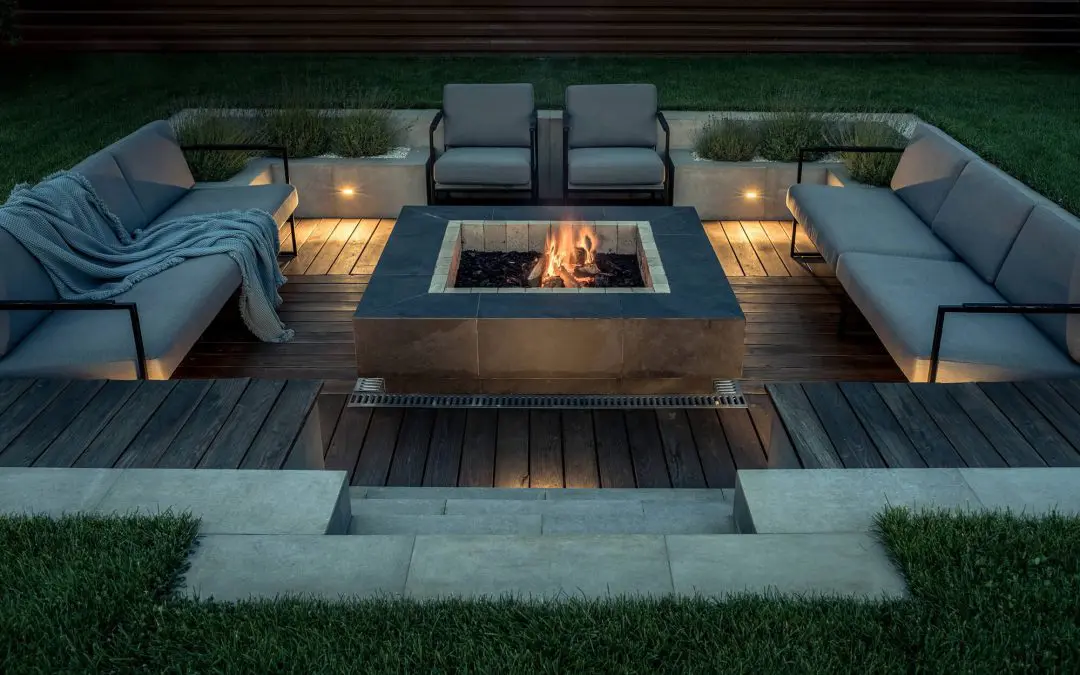Fire pits are a popular addition to outdoor spaces, offering warmth, ambiance, and a perfect gathering spot for friends and family. However, as with any fire feature, safety is paramount. Proper use and maintenance of your fire pit can prevent accidents and ensure a pleasant experience. Here are key considerations for fire pit safety.
Choosing the Right Location for Fire Pit Safety
Selecting the right spot for your fire pit is crucial. Place it away from flammable materials like trees, bushes, and structures. A clear area of at least 10 feet in all directions from your fire pit is ideal. Ensure that the area is level and stable to avoid tipping and spills. Additionally, consider wind direction; avoid placing the fire pit where smoke will blow toward seating areas or structures.
Proper Fuel Use is Part of Fire Pit Safety
The type of fuel you use in your fire pit can affect safety and performance. If you have a wood-burning fire pit, use dry, seasoned wood. Avoid burning treated wood, as it can release harmful chemicals. For gas fire pits, ensure the gas lines and connections are correctly installed and maintained. Regularly check for leaks and keep the area around the gas pit free of flammable materials.
Safe Operation Practices
When lighting your fire pit, use long-handled matches or lighters to keep your hands at a safe distance from the flame. Never use accelerants like gasoline or lighter fluid, as they can cause dangerous flare-ups. Keep a fire extinguisher or a bucket of water or sand nearby for emergencies. Never leave the fire unattended, and ensure it is fully extinguished before leaving the area.
Maintaining the Fire Pit
Regular maintenance of your fire pit helps prevent safety issues. Clean out ashes and debris after each use, and inspect the fire pit for any signs of damage or wear. Inspect gas fire pits for leaks and corrosion and tighten connections as needed.
Protecting Children and Pets
Children and pets are naturally curious about fire, making it essential to keep them at a safe distance from the fire pit. Establish clear boundaries and supervise them closely when the fire pit is in use. Consider using a fire pit screen to contain sparks and prevent accidental burns.
Weather Considerations for Fire Pit Safety
Weather conditions can impact the safety of using a fire pit. Avoid using the fire pit during strong winds, which can carry sparks and embers to flammable materials. In rainy or snowy weather, ensure the fire pit is properly covered and dried before use to prevent accidents.
When done safely, enjoying a fire pit is a cozy and festive experience. Make sure your fire pit is safe so accidents or injuries don’t ruin your evening. Remember, safety first allows for countless memorable moments spent by the fire.
FAQs
How should I clean my fire pit after use?
After each use, allow the fire pit to cool completely before cleaning. Remove ashes and debris, then use a brush or scraper to clean the interior and exterior surfaces. For gas fire pits, check and clean burner ports regularly.
How can I protect my fire pit from weather damage when not in use?
Use a weather-resistant cover to protect your fire pit from rain, snow, and debris. Store fire pit accessories, like logs and tools, in a dry place to prevent rust and damage.
Can I use fire pit chemicals or starters safely?
Only use fire pit starters and chemicals that are specifically designed for fire pits. Avoid using flammable liquids like gasoline. Always follow the manufacturer’s instructions and safety guidelines.
TMK Inspections offers home inspection services to customers in Southeast Pennsylvania. Contact us to request an appointment.

